Despite a preference for adventure bikes here at the editorial office, we hadn’t yet tested the KTM 890 Adventure. A change was in order, especially now that KTM has given this adventure bike an update for 2023. I took the 890 for a week-long journey to Trentino, specifically to the Dolomites and the region around Lake Garda.
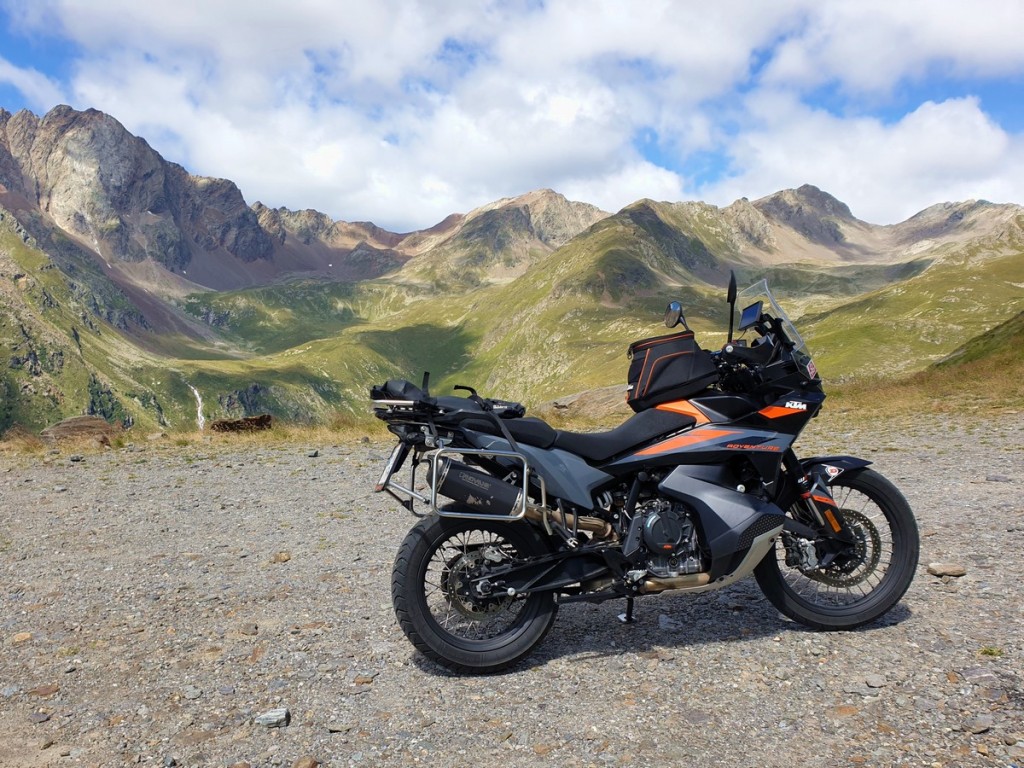
The updates for 2023 may appear subtle at first glance, but they do make the 890 a better motorcycle. The most noticeable change is the new front end: it has been redesigned, including a peculiar hole in the middle of the screen, aimed at reducing turbulence. Thanks to the new side panels, the 890 looks sleeker than its predecessor and also directs the wind away from the rider more effectively. Additionally, the 5″ TFT dashboard stands out: modern graphics replace the previously modest design. Suspension has also been revamped for easier adjustment, and the redesigned seat offers improved comfort.
For this journey, KTM had equipped the 890 with panniers and the tank bag from the Powerparts catalog. The KTM branded Touratech panniers are incredibly spacious (45 + 31 L), and the top lid opens both forward and backward with the ignition key. The locking mechanism requires some force and practice, but once they are in place, the panniers are securely attached. Despite its 16-liter capacity and tall design, the tank bag never gets in the way, and attaching it with the Quick Lock ring takes just seconds.
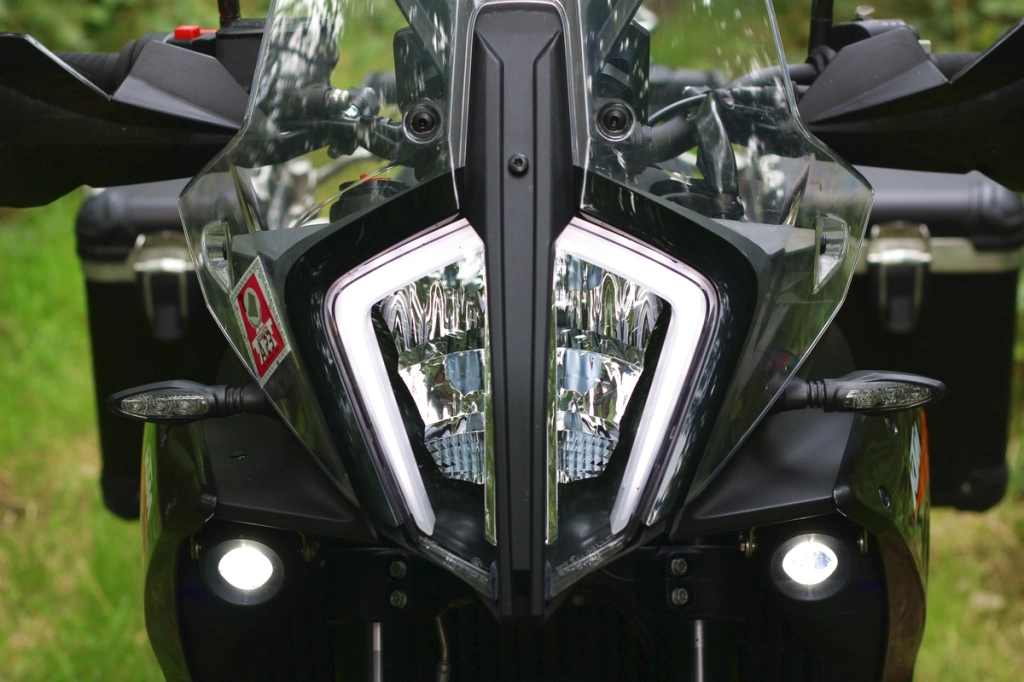
My trip began with two days on the highway. With the cruise control on, eating up the miles is a breeze. From southern Germany to northern Italy, I was treated to hours of constant rain and heavy downpours. It wasn’t the most enjoyable experience, but it was perfect for testing the wind protection and comfort.
Highest position
With the seat in the lowest position, I quickly found myself pressed against the passenger seat. Despite the 860 mm seat height, I opted to raise it to the highest position for the rest of the trip. This provides significantly more room to move and feels more like sitting on the bike than in it. The seat offers excellent grip, and I never experienced any discomfort or soreness.
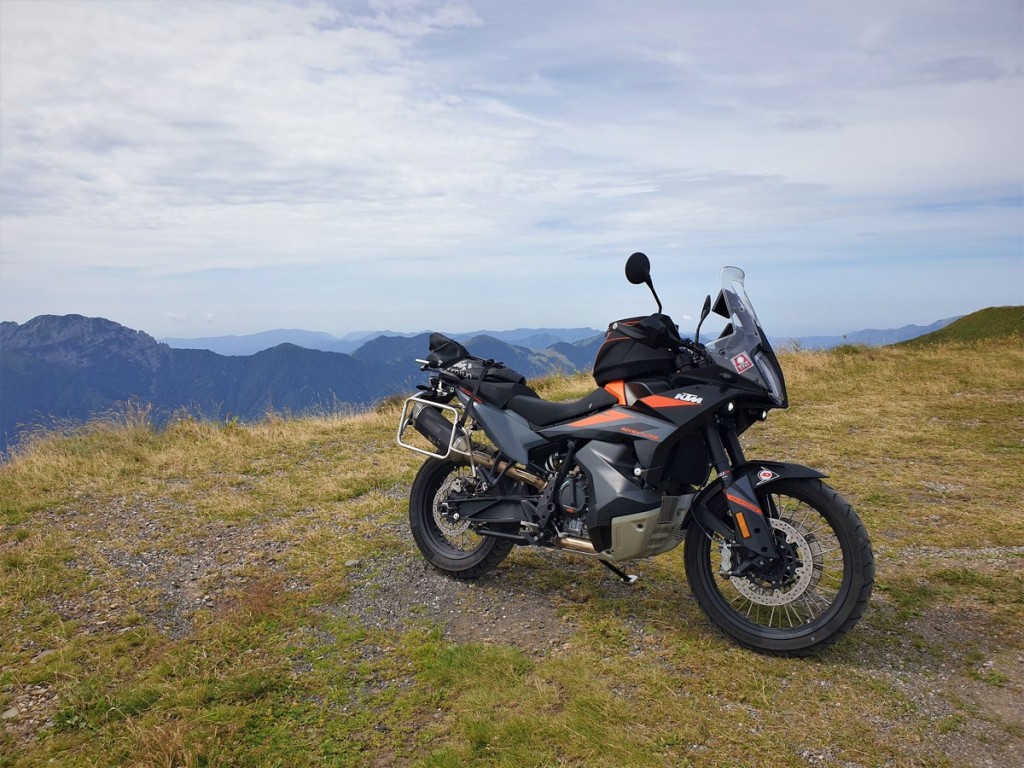
The new screen performs better than its predecessor. The hole in the screen directs the wind right onto my helmet, effectively drying it in the rain. I would have preferred if the screen were still adjustable, which is no longer the case with the new one. My legs remained completely dry in the rain, unlike my shoulders. Fortunately, the rest of the week stayed dry!
I noticed that the 890 dove quite hard into its front suspension when braking. Thanks to the new clickers on the fork, you can easily adjust both compression and rebound damping at the front, even while riding, so that issue was quickly resolved. At the rear, you can also adjust the suspension without the need for tools. Or, almost: you can change the spring preload with a large knob, but you’ll need a screwdriver for the rebound damping. It’s a shame that KTM didn’t provide clickers for the rear as well; that would have been more convenient for minor adjustments on the go.
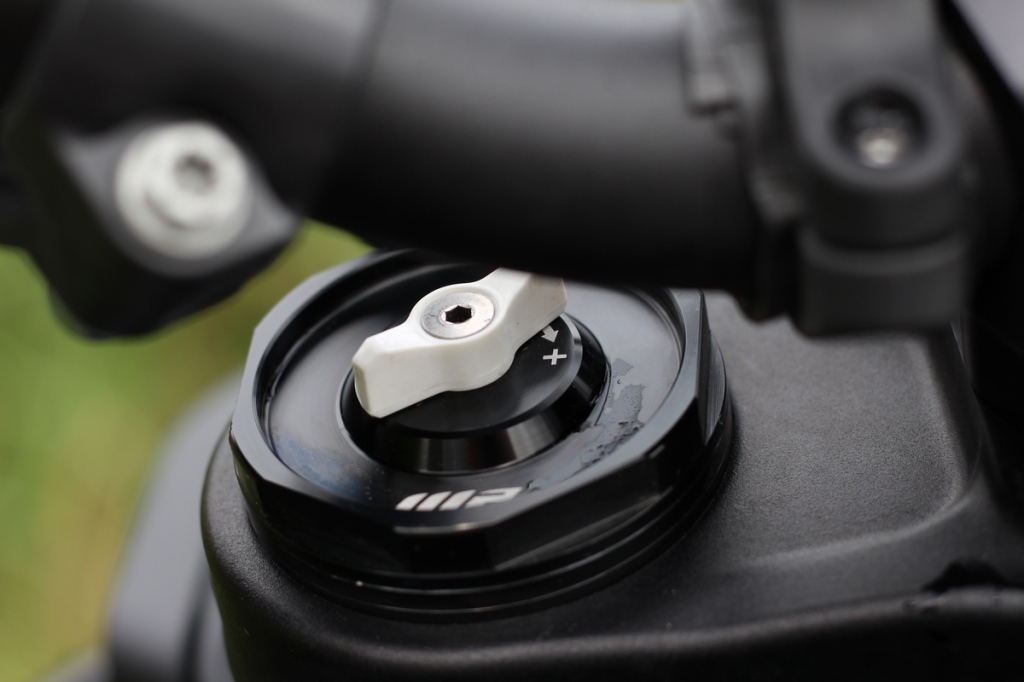
Rally mode
The 890 Adventure comes with four riding modes: Rain, Road, Off-Road, and Rally (the latter is optional, but more on that later). I had already extensively tested the Rain mode, which turns this KTM into a docile and perfectly controllable bike. The throttle response is incredibly gentle, and the lean-sensitive traction control and ABS intervene imperceptibly when needed.
For the first mountain passes of the journey, I set the riding mode to Street. It was enjoyable, but, surprisingly, I felt like something was holding the KTM back a bit, and I missed the “Ready to Race” attitude that the motorcycles from Mattighofen are so well-known for. That is until I switched to Rally mode. This mode not only transforms the dashboard but also the entire feel you get from the 890.
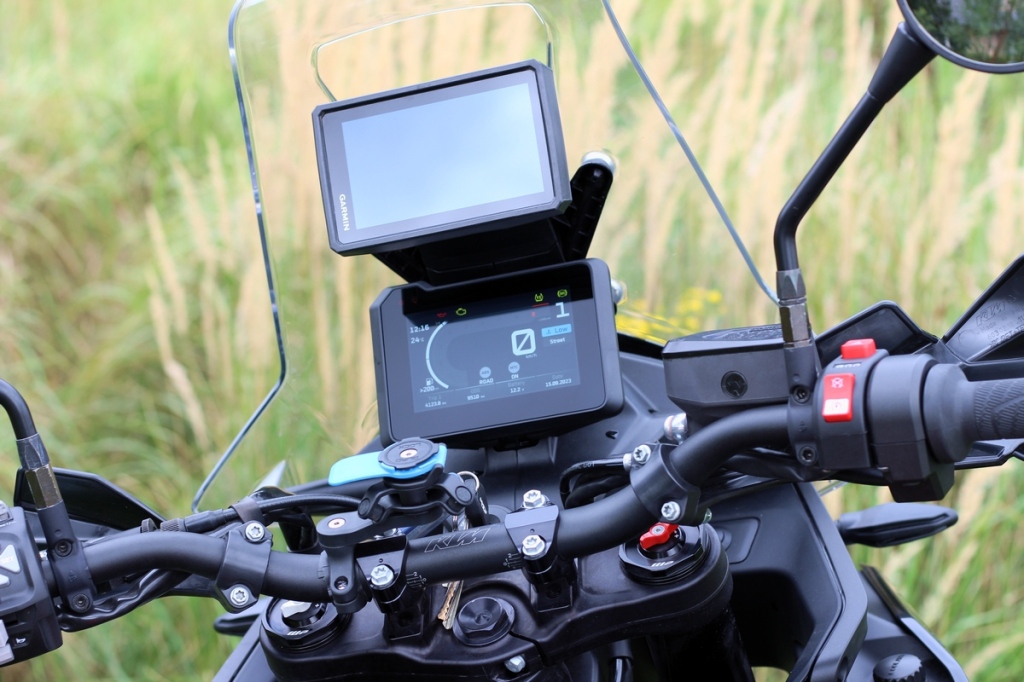
The Rally mode is designed for ripping through rough off-road terrain, but it performs just as well on perfect asphalt. The throttle response becomes incredibly direct, ensuring power is available anytime, anywhere. In the first three gears, it even feels a bit jumpy, which oddly suits this bike quite well. ABS is unequivocally disabled at the rear, but the rear brake is so easy to modulate that I never found it necessary. Even the rear wheel slip allowed by the traction control can be adjusted on the go in 10 steps. Not that I have the skill or courage to set it too low: setting it at level 7 seemed sufficient and still allowed for minor drifting on unpaved roads.
Switching between the different riding modes isn’t very intuitive; you have to delve deep into the menu to change them. Despite the presence of two customizable shortcuts – I used one for the riding mode and the other for the trip meter – it’s still a bit cumbersome. A traditional, designated button for the riding modes would be welcome. Furthermore, you can fine-tune or adjust all the electronic features, and there are quite a few of them, down to the smallest details via the well-designed menus.
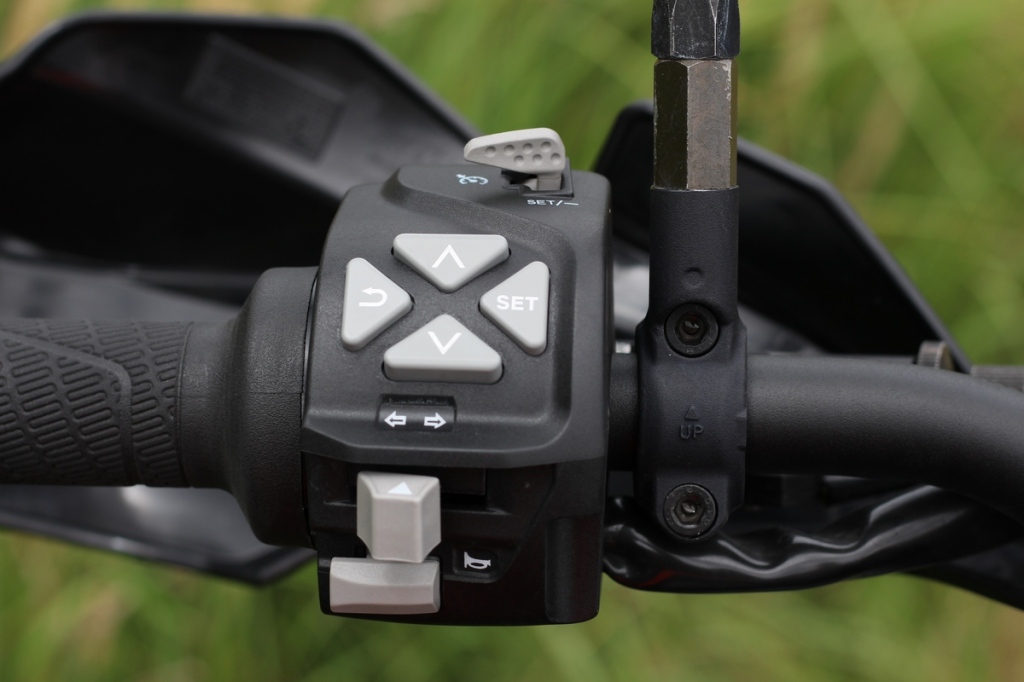
In Rally mode, I hit the mountain passes hard. Winding through cyclists and camper tourists, the 890 proves to be very agile. The low-hanging cheeks of the tank certainly contribute to this. But every advantage has its disadvantage as some say: the fuel gauge only starts counting down after 200 km, and then it’s so erratic that it becomes unreliable. Resetting the trip meter after refueling solves this issue, and it turns out that the 890 easily achieves a range of 340 km.
Descending steep hills is a thrill too: initially, the KTM brakes lack a direct bite (ideal for off-road), but they are perfectly modulated, and the ABS stays off for quite a while. Even when some passes present rough asphalt, the suspension handles everything smoothly, and the 890 stays on track. You don’t notice that the electronic aids are working hard underneath. Thanks to the highly refined traction control, the KTM responds eagerly to every bit of throttle input in all conditions. Plus, the exhaust growls delightfully, and when you blip the throttle, a distinctive twin-cylinder rumble emanates from the Remus exhaust. Quite addictive I must admit …
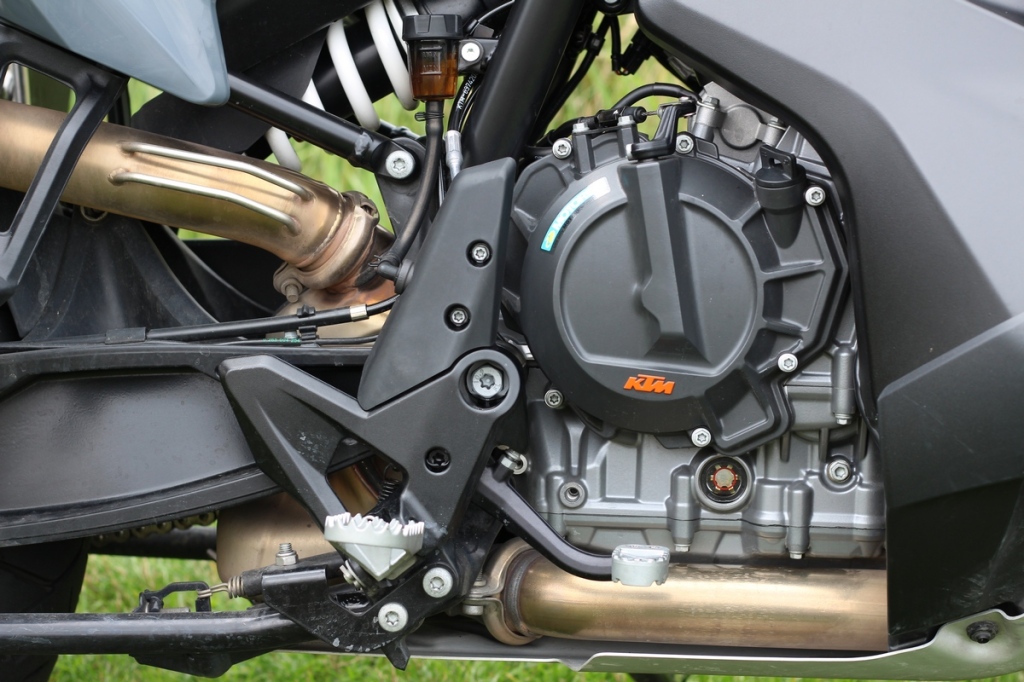
As enjoyable as it is to ride in Rally mode, it does become tiring after a while. And that’s something the rest of the motorcycle contributes to as well. The riding position is aggressive, not relaxing. While the wind protection keeps your legs out of the wind and rain, your shoulders catch the full force of what’s coming at you. Hairpins can be executed incredibly sharply and precisely, but quick combinations of corners require more input and pressure on the handlebars. Whether you consider all of this a thrilling or an exhausting character will be a matter of personal preference.
Demo mode
And then there are a few peculiarities about this KTM. It comes in Demo mode, which means you can enjoy the formidable quickshifter, Rally mode, cruise control, and adjustable motor slip regulation for the first 1500 km. If you want to keep these features after the demo period, you’ll need to pay an additional 860 GBP on top of the base price of 11,999.00 GBP. And you’ll definitely want to do that because it’s these extras that truly make the 890 Adventure what it is. This demo principle (KTM applies it to other models as well) leaves a somewhat bitter taste in my mouth. You’re buying a motorcycle that already has all this tech under the hood, but if you don’t pay extra, you lose it with a single push of a button.
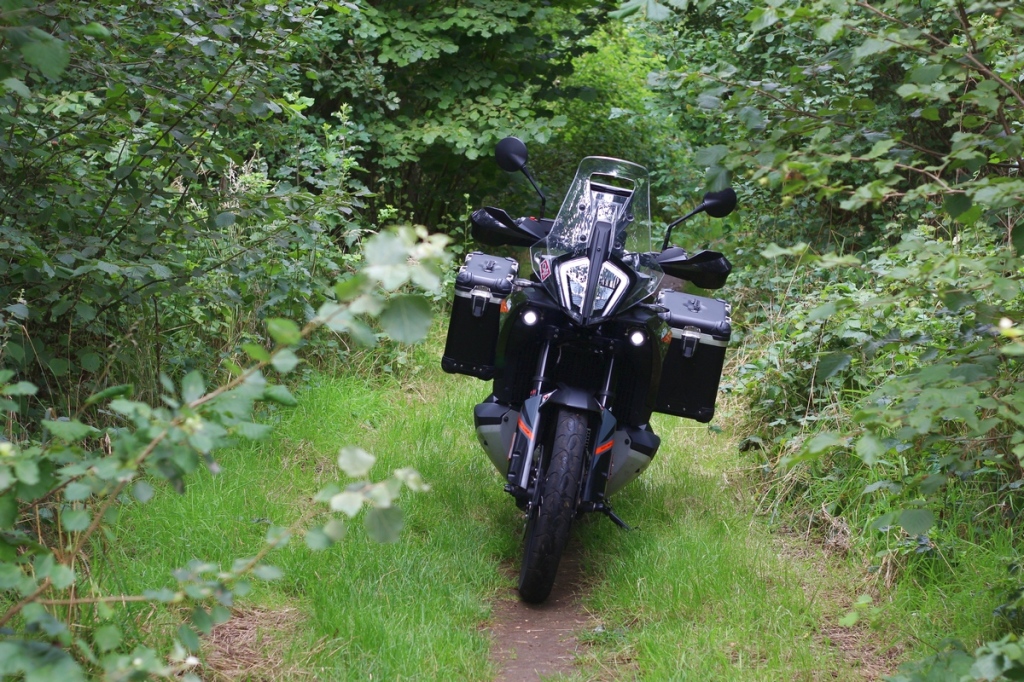
Another peculiarity, and one that was quite prominent on my test bike, was “the bounce”. Once the engine and chassis were warmed up, there was a noticeable bounce in the front end between 50 and 75 km/h, even on smooth asphalt. You could feel a pulsation even when lightly braking. Initially, I thought the suspension was poorly set up, but no matter what settings I tried, the bounce wouldn’t go away. The tires (the importer replaced the standard Scorpion Rally STR with excellent Dunlop Meridians) were also checked, and they weren’t the issue either. After some quick research, it seems that this is not an isolated case. Apparently, the factory-set steering head nut is sometimes tightened too hard, resulting in the annoying bounce. It’s an easy problem to solve, and something that dealers should, in my opinion, address as standard.
Brotherly love
I tested the 790 Adventure in the same region four years ago and made comparisons along the way. Most of the criticisms I had about the 790 have been addressed in this updated 890. Although the wind protection is not ideal yet, it’s much better than it was on the 790 back then. Vibrations are still present on the 890, but they occur at different RPMs and speeds, making them less noticeable. The lack of oomph can’t be attributed to the 890 either; it accelerates briskly from the first twist of the throttle.
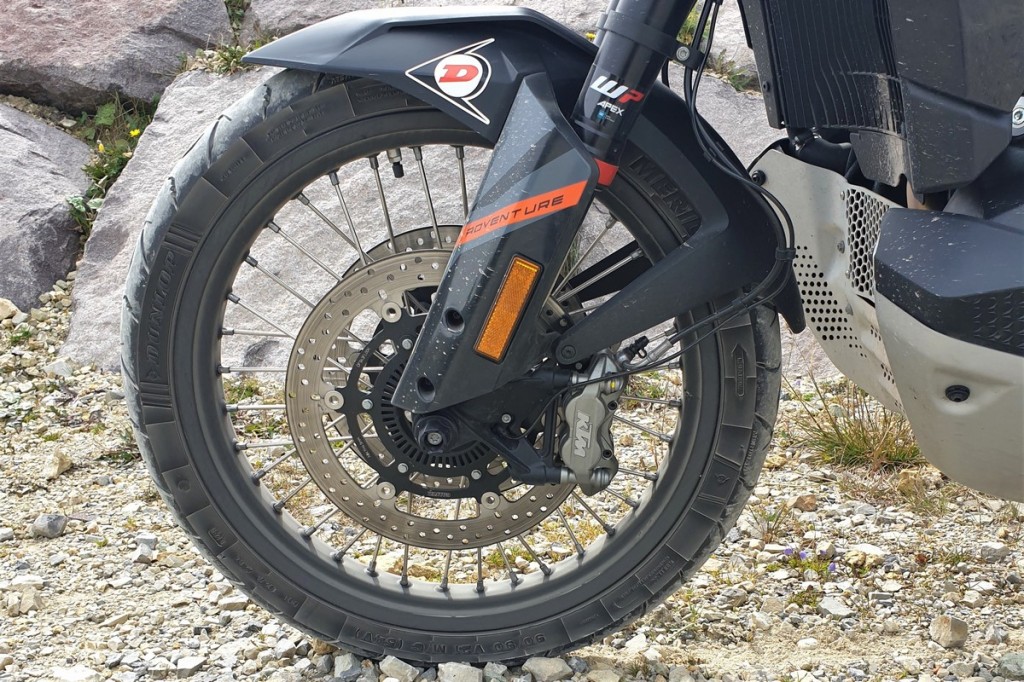
Despite this, KTM still sees potential in the 790 Adventure. In fact, at the end of 2023, the Austrian manufacturer is launching an updated version of it, offering both models alongside each other. Like the rest of the 790 family, this new version will be fully built by CFMoto. This allows KTM to keep the price low and offer an A2 version, which isn’t possible with the 890.
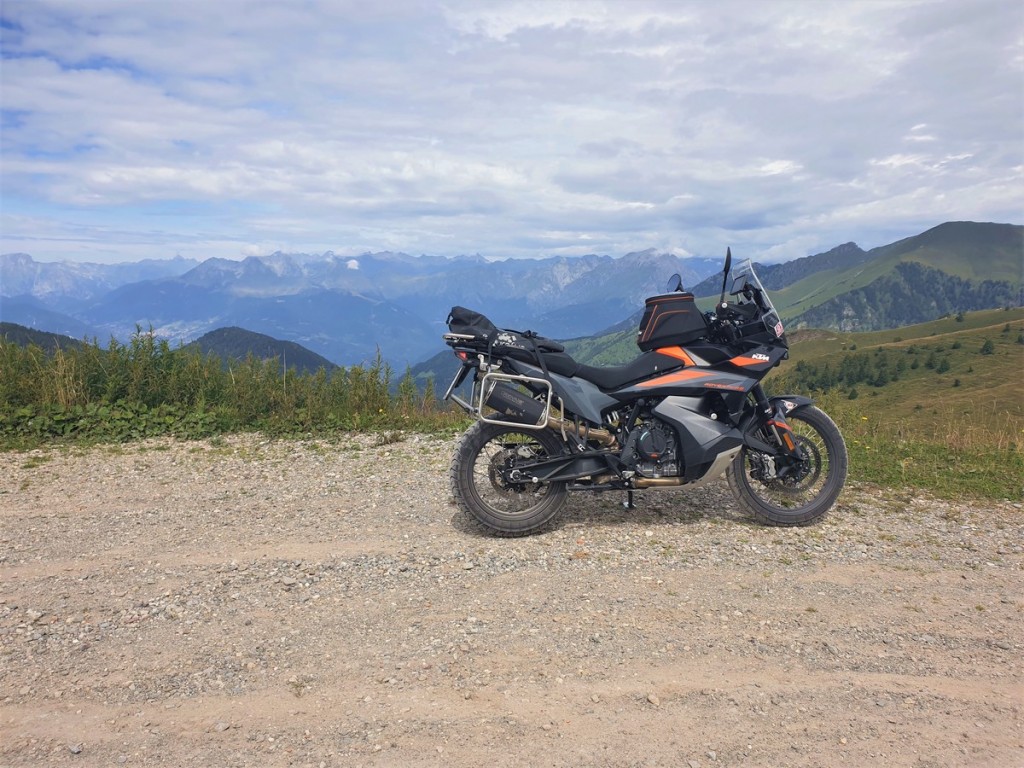
Conclusion
The KTM 890 Adventure offers a level of versatility that you’ll find on very few other motorcycles. Whether on or off paved roads, you’ll never run short of power, and this power is seamlessly controlled by the sophisticated assistive systems. With its electronics and potent engine, the 890 surpasses the middle class within the adventure segment, leaving competitors like the Yamaha Ténéré 700, the new Honda Transalp or the Suzuki V-Strom 800 XT behind. It competes with the Triumph Tiger 900, Ducati Desert X, and even the Honda Africa Twin. After its update, it’s fully prepared for the battle. Just be Ready to Race because this adventure bike has heaps of character, although for that, you’ll need to purchase the Rally mode separately.
Pros
+ Rally mode works wonders
+ Extensive and refined assistive systems, fully customizable
+ The ability to venture off-road occasionally
Cons
– Demo mode? Come on, KTM …
– Wind protection could still be improved
– The looks might not be to everyone’s taste
Technical Specifications
Engine
Torque: 100 Nm
Transmission: 6-speed
Cooling: Liquid cooled with water/oil heat exchanger
Power: 105hp / 77 kW
Starter: Electric starter
Stroke: 68.8 mm
Bore: 90.7 mm
Clutch: PASC™ antihopping clutch, mechanically operated
Displacement: 889 cm³
EMS: Bosch EMS with RBW
Design: 2-cylinder, 4-stroke, parallel twin
Lubrication: Forced oil lubrication with 2 oil pumps
Chassis
Tank Capacity (Approx.): 20 l
Front Brake Disc Diameter: 320 mm
Rear Brake Disc Diameter: 260 mm
Front Brake: Disc brake
Rear Brake: Disc brake
Chain: 520 X-Ring
Dry Weight: 200 kg
Frame Design: Chromium-Molybdenum-Steel frame using the engine as stressed element, powder coated
Front Suspension: WP APEX 43
Ground Clearance: 233 mm
Rear Suspension: WP APEX – Monoshock
Seat Height: 860/840 mm
Steering Head Angle: 64.1 °
Suspension Travel (Front): 200 mm
Suspension Travel (Rear): 200 mm